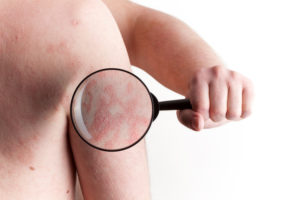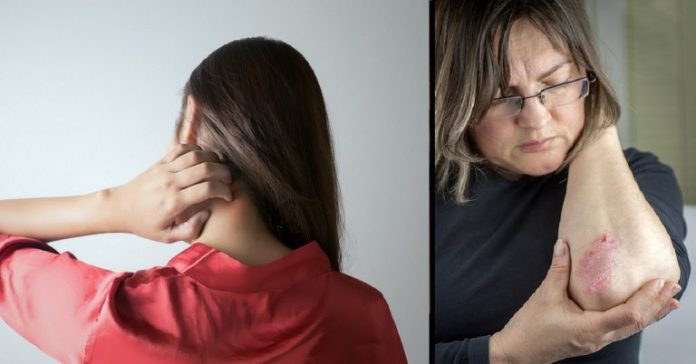Eczema is an irritating skin condition that causes a red, dry, itchy, or scaly appearance on the skin. Over thirty million people in the United States suffer from some form of this irritating condition. It is common in babies, but adults can also develop it later in life. It is important to make an appointment with a doctor to find out which type of eczema you have so you can find out how best to treat it. Try to identify what triggers your eczema when you first experience eczema symptoms. This can help the doctor better identify which type of eczema you suffer from and help treat it more effectively.

Atopic Dermatitis
Atopic Dermatitis is the most common form of eczema, but it is also the longest lasting and most severe type. It usually looks like an itchy, red rash that shows up on the cheeks, legs, and arms. This condition is more likely to occur in patients who suffer from asthma and/or hay fever. Children typically grow out of it, but it is possible for symptoms to continue into adulthood.
Contact Dermatitis
Contact Dermatitis is the itchy, red reaction to the exposure of your skin to a substance to which you are allergic. There are three common types of contact dermatitis which include hives, irritant, and allergic.
Dyshidrotic Eczema
Dyshidrotic eczema appears as small, itchy blisters on the edges of the toes, the soles of the feet, palms, and/or the fingers. There are several triggers for dyshidrotic eczema including stress, moist hands and feet, and allergies, to name a few. It is more common in women than men.

Hand Eczema
Hand eczema, or hand dermatitis, can be triggered by contact with allergens or develop because of genetics. Ten percent of Americans suffer from this condition and is more common in those who regularly come into contact with chemicals or potential allergens such as hair dressers, people in food service, healthcare, people who clean, etc.
Neurodermatitis
Neurodermatitis is a spot of irritated skin that, when scratched, becomes itchier and worsens. This leads to the skin becoming leathery in the irritated area. It typically appears on the neck, forearm, wrist, ankle, or thigh and it is possible to develop multiple irritated spots.

Nummular Eczema
Nummular eczema, or nummular dermatitis, appears in many ways and symptoms vary. Spots that appear due to nummular eczema are typically coin-shaped and can be extremely itchy or not itchy at all, can be scaly and dry or open and wet.
Stasis Dermatitis
Stasis dermatitis, also known as venous stasis dermatitis, is caused by a problem with the veins. It typically occurs in the lower legs. The veins make pressure accumulate as the blood tries to keep moving through the body, causing a red spot to appear. It can cause swelling, scaling, itching, pain, and redness to the affected area and severe cases can cause oozing, infection, and open areas in the skin.









